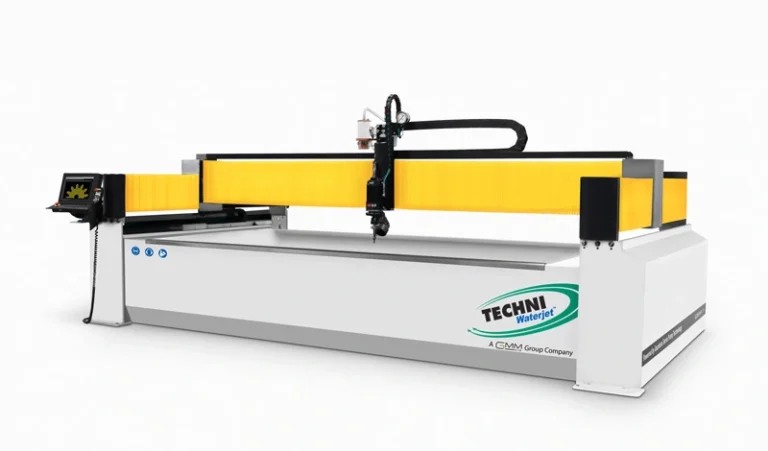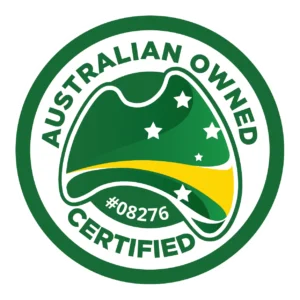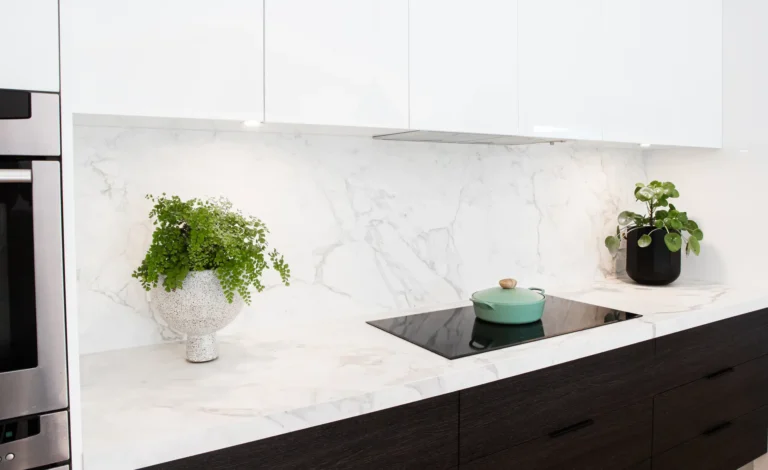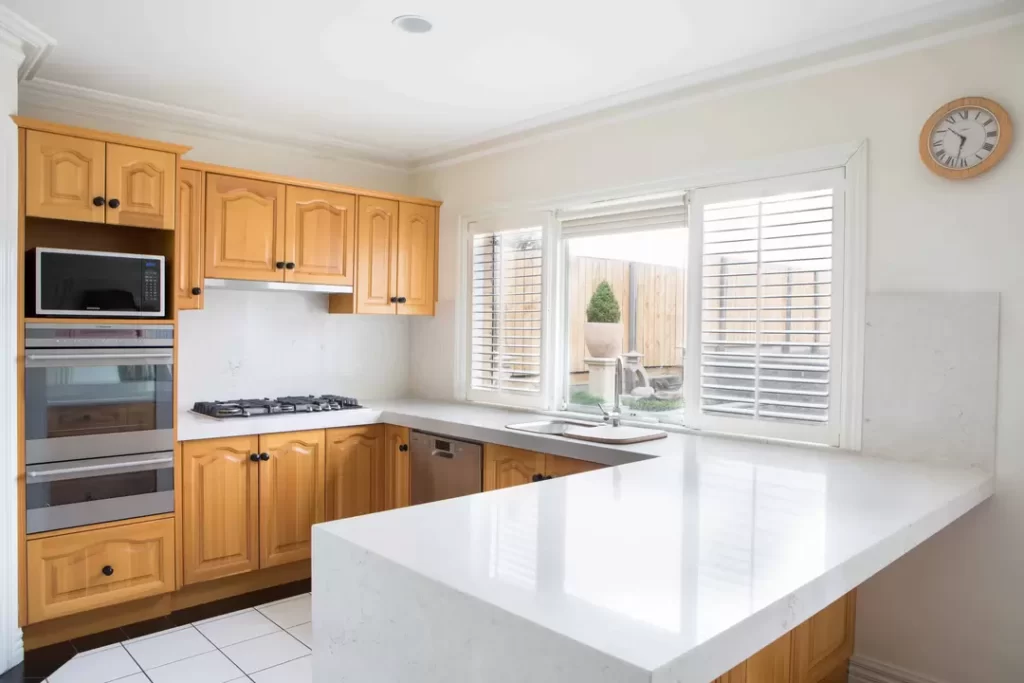
Understanding the Basics of Porcelain and Engineered Quartz Stone
Porcelain and engineered quartz stones have become famous for homeowners. This is due to their durability, versatility, and aesthetic appeal. Porcelain stone is a ceramic material fired at high temperatures, resulting in a complex and dense surface. Resistant to scratches, stains, and moisture. So, engineered quartz stone comprises around 90% quartz particles mixed with resin and pigments. It results in a durable and customizable surface. Both materials have similar benefits and drawbacks, which makes them essential to understand the basics of each before making a decision. By exploring their composition, properties, and maintenance requirements. You can make an informed choice to enhance the beauty and functionality of your home.
Differences between Porcelain Stone and Engineered Quartz Stone
Over 98% Quartz mix, when quartz is crushed, cut, polished, or altered, produces a crystalised silica dust. Yet, a national ban is being considered, as it has detrimental health effects, including cancer. It has been reported on by Channel 7 News recently when crystallised silica dust particles were found on products and surfaces of the Coles, Chadstone shopping centre. The dust was residual from recent renovations, meaning thousands of dollars worth of produce was lost. There are fears about the dust affecting workers. But porcelain does not produce crystalline silica dust and is a safer option for your property. Porcelain is CSIRO-approved. All our clients get access to the CSIRO test report when we do a quote, along with our public liability insurance. Workplace air safety monitoring test results, and licences. All the issues with engineered stone do not apply to porcelain. For example, you’re cooking up a storm and want to put your hot pot on the benchtop. With porcelain, you can do this; with engineered stone, you cannot.
Check out some comparison between the two
Another example is if you’re making a curry, like butter chicken. You can leave the sauce on your porcelain benchtop without a stain, even if you wipe it off the following day. Whereas engineered stone, unfortunately, will require heavy cleaning products to remove even the slightest spill, even if it is removed immediately. Although the stain disappears, those heavy cleaning products remove the engineered stone’s shiny layer. Then, when you have a spill later, you don’t have that protective shiny layer left on top and the spill will penetrate deeper into the benchtop. Making it even harder to get the stain out. Nonetheless, porcelain is non-combustible, which means it can be behind a gas stove top; engineered stone you cannot. Porcelain is 100% streak-free guaranteed; it is also fingerprint-proof. Porcelain is also 100% UV proof; if direct sunlight comes in for the life of the porcelain benchtop, UV will not deteriorate the benchtop. With engineered stone, UV does affect the longevity of the benchtop. Thus, porcelain does not wear and tear; you can use the same spot to prepare food, make spills, and clean it afterward. You will never be able to tell from the one used daily. Whereas engineered stone is less durable, and if you use the same area, you will be able to notice the difference. Pigmenting is 100% consistent in porcelain; the pattern will always match, but this is not the same with engineered stone. You must cust the Porcelain with a laser jet and CNC technology, and we have perfected the process for our customers.
The downside of porcelain
The downside of porcelain is the cost and time needed to prepare and manufacture it before installation. It’s a very tough material, 3x tougher than safety glass, and requires water jet technology to cut it. We cannot use saws or angle grinders on porcelain; we can only use water jet technology. With water jet technology, you have the extra cost of an abrasive used in the water rather than the equipment if you cut with a grinder or saw. Once porcelain is installed, it will be stain-free and look as good as new for as long as you have the benchtop.
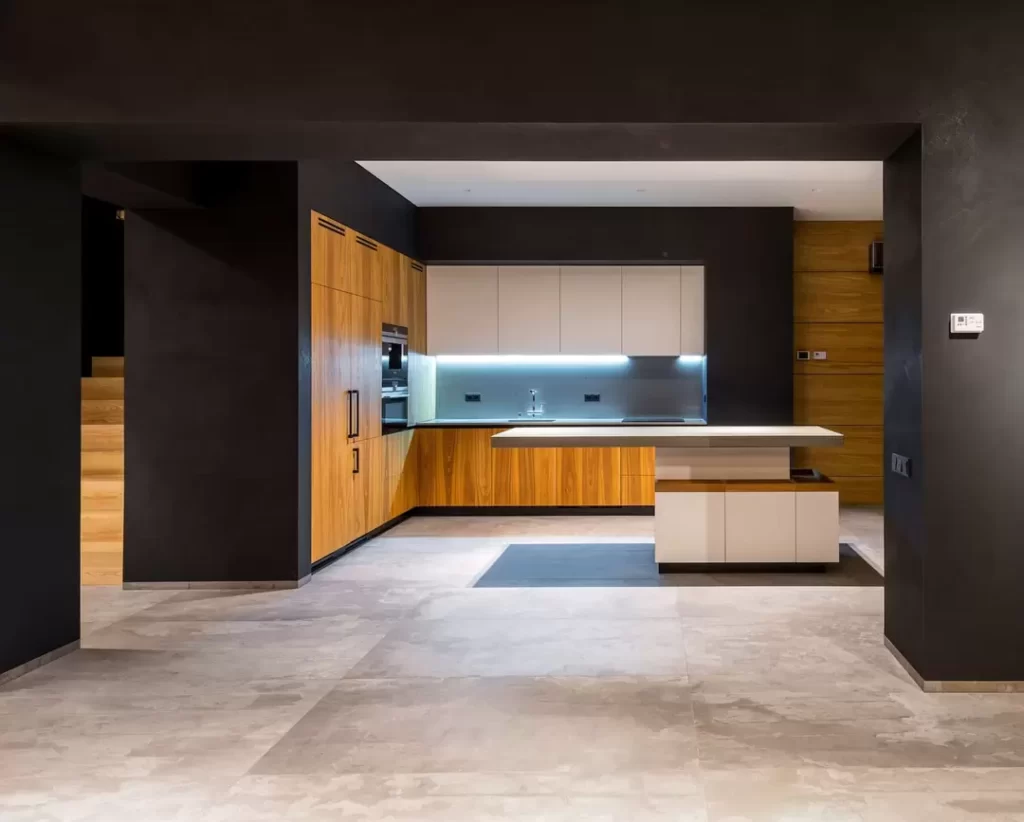
Comparing the Durability and Maintenance Requirements of Each
Two options come to mind when selecting the perfect stone for your home or establishment: porcelain and engineered quartz. These stones offer a sleek and timeless aesthetic, but their durability and maintenance requirements set them apart. Porcelain stone is durable and can withstand extreme weather conditions, making it perfect for outdoor spaces.
This stone requires minimal maintenance and is resistant to scratches, stains, and burns. So, engineered quartz stone is durable and easy to maintain. Unlike porcelain stone, it is not susceptible to cracking or chipping. Both rocks are excellent options for any setting, but it comes down to personal preference and the specific needs of your space.
Exploring Aesthetic Characteristics of Porcelain and Engineered Quartz Stone
Porcelain and engineered quartz stone are two pleasing materials becoming popular in interior design. Both materials are known for their exceptional durability and stunning aesthetic qualities. Porcelain stone is a ceramic material made from clay, feldspar, and other natural materials. It is robust and offers various designs, from natural stone to wood-look finishes. So, the engineered quartz stone is artificial, comprising 90% quartz and 10% resin.
This material is resistant to scratches, stains, and heat, making it ideal for kitchens and bathrooms. The unique beauty of engineered quartz stone comes from using pigments and other materials to create a wide range of colors and patterns. Whether you choose porcelain or engineered quartz stone, these materials can create a stunning and durable interior design.
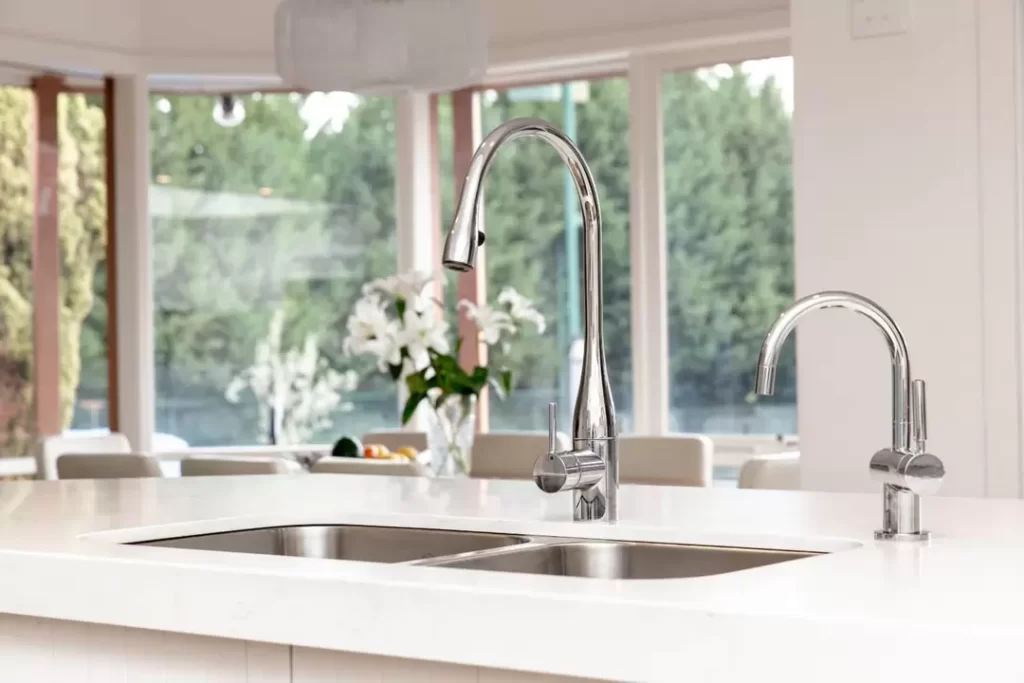
Evaluating How Each Material Can Transform Your Home’s Interior Design
Suitable materials can make all the difference when transforming your home’s interior design. You can use this in various settings, from floors and walls to countertops and furniture. So, engineered quartz stone is resistant to heat, stains, and scratches. They are making it ideal for high-traffic areas like kitchens and bathrooms. These materials come in various colors, patterns, and textures, allowing you to create a design that reflects your style. By evaluating their unique properties and features, you can make an informed decision and achieve the interior design of your dreams.
In conclusion
Porcelain and engineered quartz stones have a few similarities but remain distinct in many ways. Porcelain stone has solid and heat-resistant features. At the same time, engineered quartz stone’s rich colour features are one of its significant advantages. The right choice for your purpose depends on what your needs are.
It could be to create a modern-looking living room or an environment that looks as natural as possible; whichever is, the decision is yours. Visit United Stone Melbourne today and look at our vast selection of beautiful stones. Here, you can also find experienced professionals who are more than willing to help provide the perfect solution for all your needs. We would love to have you join us in revolutionizing the world of stones and changing the way people experience interior design!


